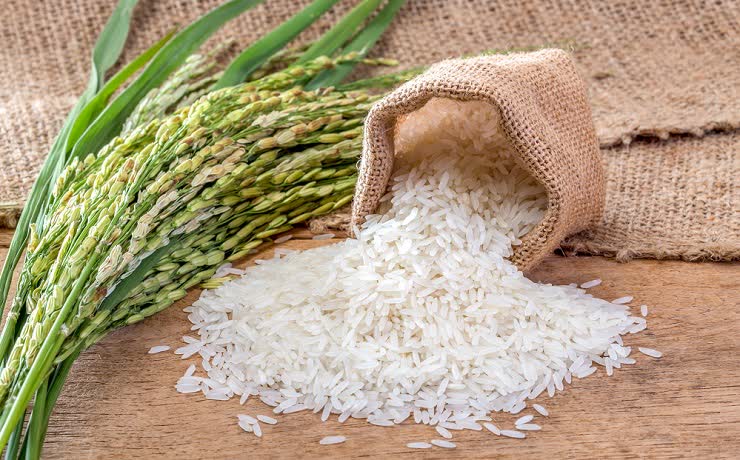Foreign news agencies recently reported that Asian rice prices rose to the highest in 15 years, in line with the Thai rice export situation in the first 10 months of 2023 that still has a bright picture. With an export value of 132,290 million baht, expanding by 24.6% (YOY), this factor has a positive effect on the overall income of players in the rice market. From farmers, millers, yong (middlemen in rice procurement) to exporters. An interesting question is what will be the direction of rice exports for the remainder of 2023 continuing until 2024? So, what risks are there in the Thai rice industry in the future?
It is expected that during the remainder of 2023, Thai rice exports will still have a good trend. From the price of 5% white rice, which will remain high at around 580-585 USD per ton. This is higher than the monthly average from 2020-2022 of $464 per tonne.
This is supported by India’s rice export restriction policy. And it is expected that the average rice export volume in November-December 2023 will be 8 hundred thousand tons per month. This is a high export volume level compared to the 2020-2022 average of 500,000 tonnes per month.
due to concerns about food security in trading partners together with the value of the baht which is at a weak level Therefore, it allows Thai rice to be competitive. As a result, the overall rice export volume for the entire year 2023 is expected to increase 10.2% YOY to 8.5 million tons.
In addition, Thai rice exports also benefit from the problem of transportation costs easing. The average Shanghai Containerized Freight Index (SCFI) in November 2023 was at 1,032 USD per TEU, down 28.3% (YOY), and it is expected that the average SCFI for the entire year 2023 will decrease compared to the year. 2022, which is partly a result of overall international trade shrinking. It also benefited from the high base of the previous year.
In 2024, rice export volume is expected to be at 8.6 million tons, similar to 2023, which was around 8.5 million tons, from rice supply in the world market that is still tight due to the El Niño factor that is expected to last a long time. Until the middle of 2024, important trading partners will continue to accumulate rice stocks. But it is expected that India’s rice export restriction policy will be relaxed. After the weather in India began to return to normal in the second half of 2024, the benefits from rice importers turning to importing Thai rice to replace India gradually disappeared.
As for the export price of 5% white rice in 2024, the World Bank estimates it will increase on average by 6% (YOY) to USD 595 per ton. from world rice stocks that still tend to decrease and food security problems. However, the impact of the baht, which is likely to strengthen, must still be monitored. This may cause export prices to expand lower than estimated.
Even though the Thai rice industry is clearly benefiting from the price factor at present, But relying on such factors alone may not be sustainable. If in the future, concerns about food security are eased, It may cause the price of rice in the world market to drop rapidly.
Moreover, Thai rice also faces structural problems from rice varieties that are starting to fall out of market demand and yields per rai that are lower than competitors. Affecting the ability to compete Including the problem of managing rice stocks with transparency, accuracy, and efficiency as collateral for loans. In addition, the cost of producing rice in Thailand is higher than competitors’, making it difficult to compete on price. Including having to face the problem of Climate Change, which is likely to become more severe and may result in a decrease in rice production in the next period.
Thai rice businesses should focus on developing sustainable rice production and applying technology to meet global trends that focus on reducing greenhouse gas emissions, such as alternating wet and dry rice cultivation. Including deploying technology to help manage production efficiently, such as using Smart Silo technology for storing paddy rice to track quality and clearly know the quantity of rice stocks. So that the management of rice stocks used as collateral in applying for loans from banks can be done efficiently.
In addition, the government sector should be the driving force in investing in infrastructure in the rice business, such as developing appropriate water management and irrigation systems. Moreover, entrepreneurs should focus on the market leading production. By developing rice varieties that meet market needs in order to elevate Thai rice to the higher quality rice market and possibly expand the market base by processing it into higher value products. for use in the industrial sector more



